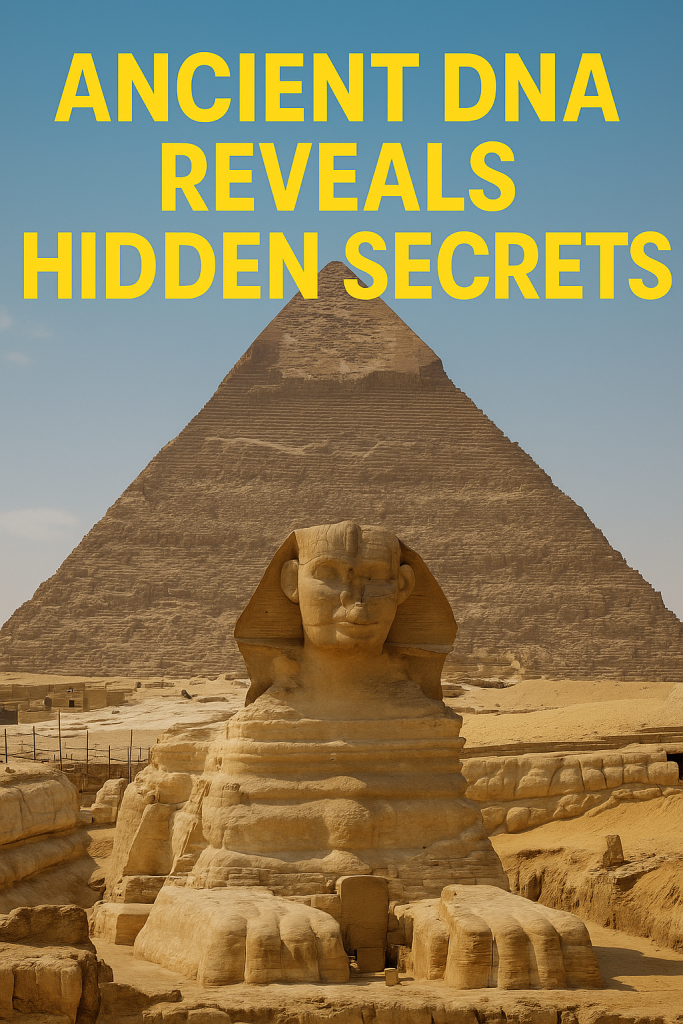In a groundbreaking genetic study unveiled in 2024, scientists have successfully decoded the DNA of an ancient Egyptian individual who lived approximately 4,800 years ago, offering unprecedented insights into life during the heyday of pyramid construction. This remarkable discovery provides a new window into the ancestry, health, and social complexity of the people who built Egypt’s iconic monuments.
The genome was extracted from skeletal remains dating back to Egypt’s Old Kingdom period, an era synonymous with the construction of the earliest pyramids, including the renowned Step Pyramid of Djoser and the Great Pyramid of Giza. By applying cutting-edge DNA sequencing technologies, researchers reconstructed the genetic profile of an individual who lived close to the time many of the pyramids were being built.
Unlocking Ancient Ancestry
The DNA analysis revealed that this ancient Egyptian shared a genetic affinity with populations from the Near East and Anatolia, suggesting a complex web of interactions and migrations well before the classical era of Egyptian civilization. This challenges earlier assumptions that ancient Egyptians had a more isolated genetic lineage.
The data also highlights the long-standing genetic continuity in the region, with the individual’s genome showing close ties to earlier populations from the northeastern African area. This finding supports the idea of significant gene flow and cultural exchange across the eastern Mediterranean and northeastern Africa during the third millennium BCE.
Health and Lifestyle Insights
Beyond ancestry, the genetic material provides clues about the individual’s health, diet, and susceptibility to diseases. Signs of genetic traits linked to lactose intolerance and certain metabolic conditions emerged, reflecting dietary patterns consistent with a society transitioning from hunter-gatherer subsistence to early agricultural farming.
Moreover, genetic markers associated with immunity suggest the presence of adaptations to local pathogens, shedding light on health challenges faced by pyramid builders and ancient Egyptians living in dense populations.
Implications for Understanding Pyramid Builders
This genetic breakthrough also offers a fresh perspective on the demographics of the workforce behind Egypt’s monumental architecture. Far from being slaves, the workers who constructed the pyramids were likely a diverse community with deep regional connections, as echoed in the genome’s mixed heritage.
Archaeological evidence combined with genetic data underscores a society with complex social structures and widespread interactions, which may have played a pivotal role in the scale and success of pyramid construction projects.
The Future of Ancient DNA Research in Egypt
The success of this study heralds a new era in the exploration of ancient Egyptian history through genomics. With the region’s arid climate aiding DNA preservation, ongoing research aims to analyze more samples across different periods, unraveling how Egypt’s population evolved over millennia and how historical events shaped their genetic landscape.
In sum, the 4,800-year-old Egyptian genome has not only expanded scientific understanding of ancient population dynamics but has also deepened appreciation for the people behind one of the most enduring legacies of human civilization — the pyramids.



